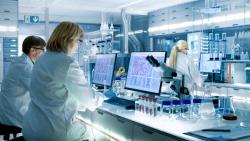© 2026 MJH Life Sciences™ and The Center for Biosimilars - Biosimilars, Health Economics & Insights. All rights reserved.
Decade of Biosimilars Yields $36 Billion in Savings and Strengthens Supply Chain
Dracey Poore, MS, director of biosimilars and emerging therapies at Cardinal Health, highlighted that biosimilars saved $36 billion over the last decade by improving patient access and the supply chain, but continued education and a robust pipeline are crucial for future growth.
Over the past 10 years, the biologics market has demonstrated significant savings of $36 billion, along with increased patient access and a stronger supply chain, according to Dracey Poore, MS, director of biosimilars and emerging therapies at Cardinal Health and a member of The Center for Biosimilars® Advisory Board.
Speaking at the 2025 Festival of Biologics USA, taking place April 23-24 in San Diego, California, Poore highlighted a Cardinal Health report reviewing the past decade's biosimilar milestones.
The biosimilars market has increased patient access, particularly for costly treatments, and established a stronger overall supply chain. Furthermore, biosimilars foster a competitive landscape that curbs price escalation, and regulatory maturation alongside stakeholder education and acceptance have shifted approval processes while increasing trust in biosimilars.
“I remember when we first launched the biosimilars, I was in the industry then as well, and we were just trying to teach about how they got to market, the approval process. We don't have to talk about that so much anymore. Now we're talking about sustainability. We're talking about viability. We've evolved. We've matured,” Poore explained.
Education has moved the industry, but continued efforts are necessary for growth as more biosimilars enter new therapeutic areas. Poore referred to research focused on the retina, a biosimilar market with fast uptake, where ranibizumab biosimilars have reached 55% uptake. Poore emphasized that the future of retina biosimilars is promising, with the aflibercept market estimated to have $6.3 billion in wholesale acquisition cost sales in 2024.
“Dr [Jon] Adelberg, one of the retina specialists I spent a lot of time with, said that in his practice, only 1 in every 100 patients knows what a biosimilar is. If you think that the education piece is over, it's not,” Poore said.
In oncology, practices have found ways to make biosimilars more profitable, thus improving adoption despite economic barriers like reimbursement policies and pricing dynamics and noneconomic barriers such as provider/patient awareness, inventory management, and benefit investigation processes.
Poore emphasized that tight revenue cycle management, strong collaboration with a pharmacy team, payer analysis, and on-time ordering are some avenues for success. She also addressed sustainability concerns, noting adalimumab biosimilars have a 28% market share, falling short of the predicted 46% by the end of 2025, despite the demonstrated cost savings potential of biosimilars.
Poore explained how the oncology biosimilars market aligns with the value-based care model to improve patient outcomes and reduce costs, and practices with strong payer relationships can successfully leverage them to secure biosimilar coverage.
Looking ahead, Poore highlighted key priorities:
- Education to improve provider and patient confidence and trust
- Clarifying interchangeability designation to increase market adoption
- Market viability to align stakeholder incentives with policy support
- Pipeline expansion, as only 10% of the 118 biologics expected to lose patent protection in the next decade have biosimilars in development
Poore expressed concerns about whether the current drug pipeline is sufficient to provide market savings for funding future innovations, align stakeholder incentives, and ensure market viability and profitability.
“I do believe the foundation has been built, and I think we've done a great job the last decade of building the foundation. Obviously, we have not unleashed the full impact of this market, but we have the next 10 years to do that,” Poore concluded.
Reference
Poore D. A decade of biosimilars. Presented at: Festival of Biologics USA; April 23-24, 2025; San Diego, CA.



